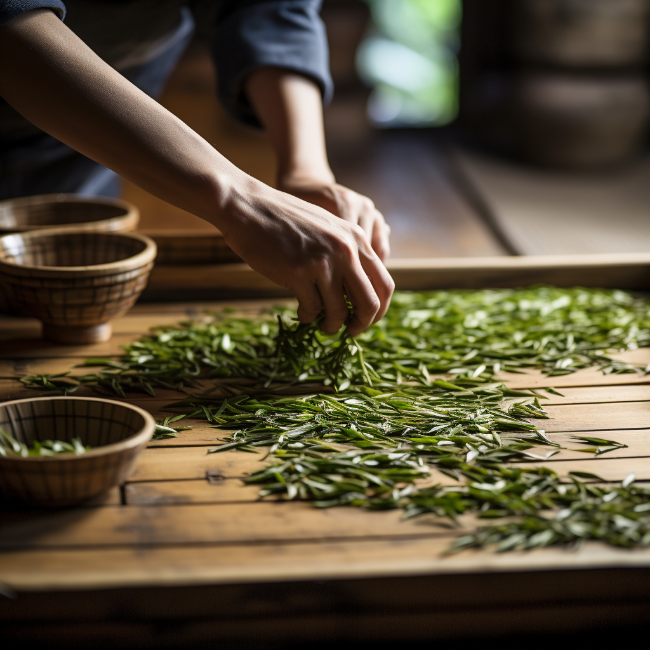
How is white tea made?
White tea is one of the most delicate teas, loved for its subtle flavor and aroma. But how is this unique tea actually made? At its core, the process of making white tea boils down to careful selection of young tea leaves and a minimalist treatment process. But there are exceptions. Let's explore the fascinating world of white tea production.
The delicate process of making white tea
The production of white tea begins with the Camellia sinensis plant, as do all teas. There are also other subspecies that can be used. What sets white tea apart is the specific selection of leaves. Generally, for white tea, the youngest leaves and buds of the tea plant are picked, often covered with tiny white hairs[1].
After picking, these leaves and buds are carefully spread out and dried in the sun or in a controlled environment with low humidity[2]. This minimizes oxidation, allowing white tea to retain its light color and subtle flavor. The result is a tea that is both elegant and complex.
One exception: Moonlight white tea
Although white tea is generally made from young leaves, there is an interesting exception: Moonlight white tea. This tea, also known as "Yue Guang Bai," is made from both the young and mature leaves of the tea plant[3]. This gives Moonlight white tea a unique taste and color midway between white and black tea.
Taste for yourself the subtlety of white tea
Curious about the subtle taste of white tea? Buy white tea at Leaves with hugs.
Also, read up on the disadvantages of white tea here.
Sources
- "White tea: Its history, composition, and potential effects on body weight management" - eFood
- "Characterization of White Tea – Comparison to Green and Black Tea" - Journal of Consumer Protection and Food Safety
- "Phytochemical profile of differently processed tea: A review" - Journal of Food Science
.png)

